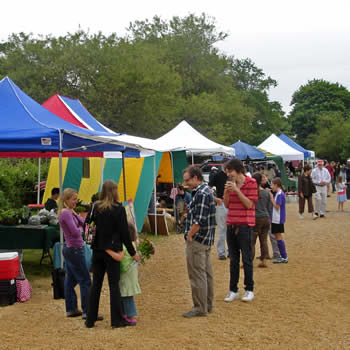 The Vineyard economy is largely driven by its vacationers – second home owners and visitors – who bring significant economic activity to the Island. Hospitality (food and accommodations), retail, construction, and real estate are the four key industries that make up more than half of the Island’s economy. We need to keep this part of the economy robust, vital, and responsive to changing needs.
The Vineyard economy is largely driven by its vacationers – second home owners and visitors – who bring significant economic activity to the Island. Hospitality (food and accommodations), retail, construction, and real estate are the four key industries that make up more than half of the Island’s economy. We need to keep this part of the economy robust, vital, and responsive to changing needs.
At the same time, a more diverse and stronger year-round economy would be good for the Island’s residents. Greater diversity and economic self-reliance means that the Vineyard economy can remain strong as we face the challenges of a global economic recession, climate change, peak oil, and globalization.
The natural beauty and history of the Island are matched by the great diversity of its community. Protecting and building on the Island’s natural resources, environment, and cultural heritage is key to sustaining both the seasonal and year-round economy of Martha’s Vineyard.
- From winter to summer, it is estimated that the population swells from about 17,000 to more than 60,000. The number of jobs grows from 6,104 to 10,681 (2008 figures from the Massachusetts Department of Labor and Workforce Development), plus an estimated 3,400 self-employed individuals (2007 figures reported by the US Census Bureau and the US Department of Economic Analysis). Unemployment typically drops from 7% to 2%, though the unemployment rate surpassed 11% in February 2009.
- The Vineyard is remarkable in that more than 70% of Island businesses employ between one and four employees and most are locally owned. Tourist-related sectors (retail, accommodation and food service, arts, recreation, and entertainment) represent 37% of employment (2008) but only 28% of wages. Construction accounts for 10% of jobs and 14% of wages.
- It is estimated that year-round residents purchase about a third of the goods and services sold on the Island. Seasonal homeowners and their guests generate more economic activity (38%) than do residents. Vacationers and day visitors generate about 26%.
- The visitor-related component of the economy produces far more low-wage jobs than high-wage jobs. The core visitor-related industries of construction; retail; accommodation and food services; arts, entertainment and recreation; and property services employ about half of wage-earning workers. These core industries produce only 20% of the Island’s high-paying jobs and 80% of its low-paying jobs. By comparison, other year-round economic activities produce twice as many high-paying jobs as they do low-paying ones (1,184 to 586).
- Many low-wage workers are making significantly more than those doing the same jobs elsewhere in Massachusetts. The market seems to reflect, at least partially, the higher cost of living on the Island in the compensation paid to the lowest-wage workers. The Island’s low average wage (73% of the statewide average) and low median household income (90% of the statewide median) are more a function of the nature of the jobs than the level of wages within those sectors.
- By contrast, traditionally high wage jobs tend to pay less on the Island than elsewhere in Massachusetts. The ceiling seems to be formed partly by a higher reliance on part-time and seasonal work, but also by the limited number of professional, financial, business, scientific, technical, educational, and health-related jobs that serve the visitor and year-round populations or that sell services to a market beyond the Island itself.
Documents
- Martha's Vineyard Economic Profile: This 2008 study was prepared by John Ryan of Development Cycles as part of the Island Plan process. The study reviews a wide range of economic and demographic information for Dukes County in order to present an economic trends profile that reflects upon the key issues facing the Livelihood and Commerce Work Group.
- Cost of Living Index (2006):
- Martha's Vineyard Indicators Report - Measures of Sustainability: This 2005 report describes the result of an effort initiated in 2000 to seek a better understanding of how sustainable Martha's Vineyard is by looking at 15 indicators, each using a specific measure to monitor change in four broad categories: Nature, Economy, Society and Well Being.

